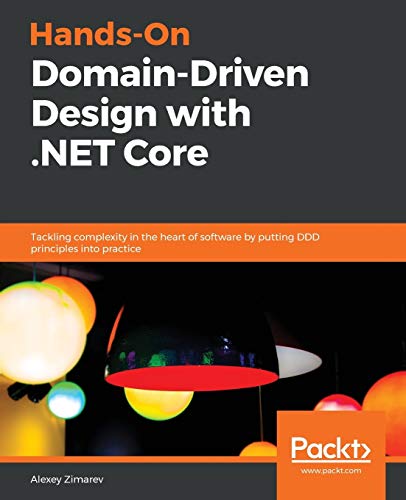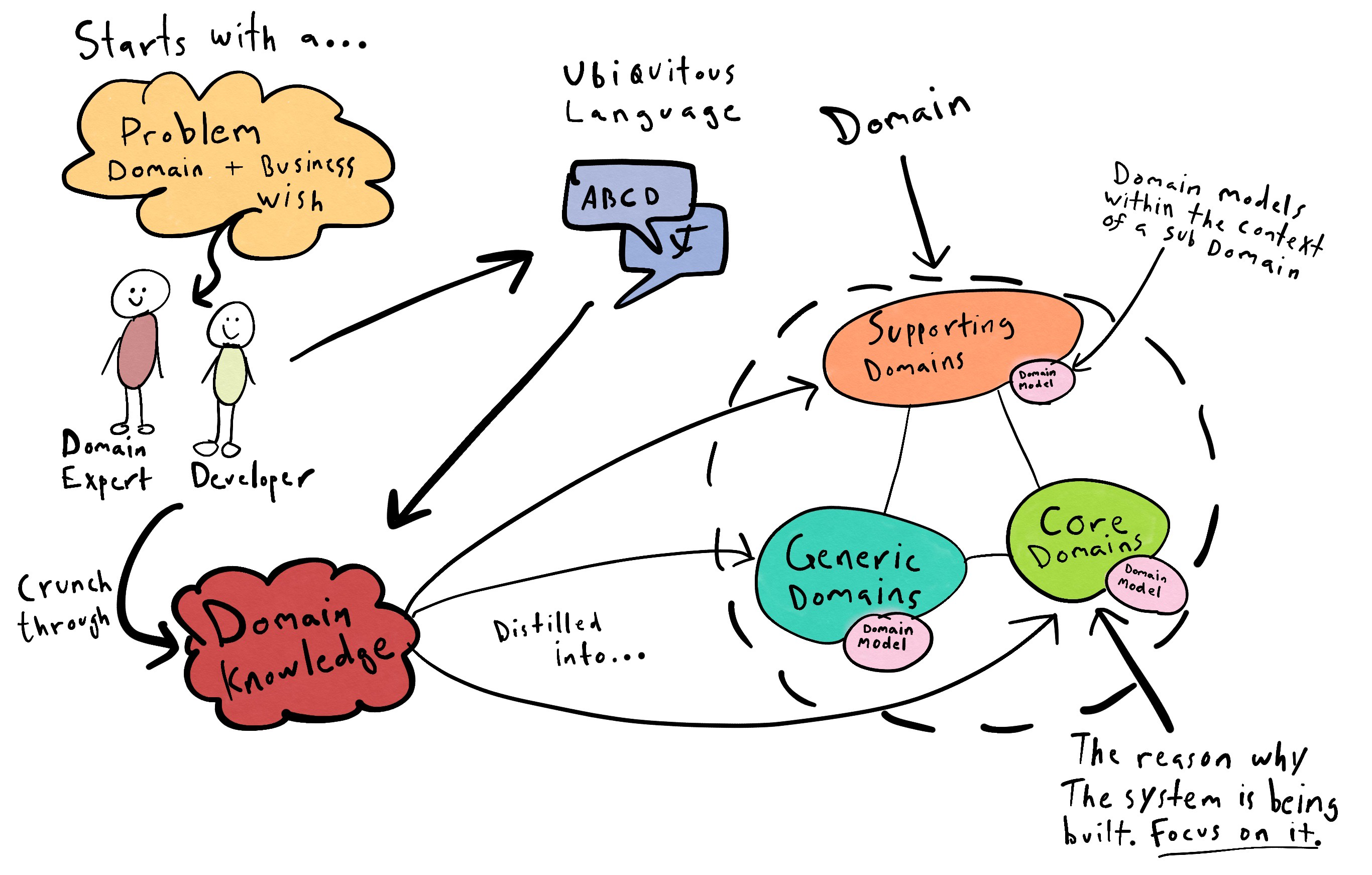Domain-driven Design: Tackling Complexity in the Heart of Software Eric Evans
Table Of Content

When I took a close look, I saw that they lacked a domain model, or even a common language on the project, and were saddled with an unstructured design. So when the project leaders did not agree with my assessment, I declined the job. A year later, they found themselves bogged down and unable to deliver a second version. Although their use of technology was not exemplary, it was the business logic that overcame them. Their first release had ossified prematurely into a high-maintenance legacy. As aresult of this initial success, expectations for future development were sky-high.
Read an Excerpt
A detailed look at domain-driven design in software development, including basic implementation and a handful of advantages and disadvantages of its use. Yet the most significant complexity of many applications is not technical. When this domain complexity is not dealt with in the design, it won't matter that the infrastructural technology is well-conceived. A successful design must systematically deal with this central aspect of the software.
Software Development
I've tried best practices in design and development process as they have emerged from the leaders in the object-oriented development community. A feature common to the successes was a rich domain model that evolved through iterations of design and became part of the fabric of the project. This book intertwines design and development practice and illustrates how domain-driven design and agile development reinforce each other. A sophisticated approach to domain modeling within the context of an agile development process will accelerate development. The interrelationship of process with domain development makes this approach more practical than any treatment of 'pure' design in a vacuum.
Agile Software Development
Lifting this ceiling on complexity calls for a more serious approach to the design of domain logic. Early in my career, I was fortunate to end up on a project that did emphasize domain design. This project, in a domain at least as complex as the one above, also started with a modest initial success, delivering a simple application for institutional traders.
Book description
Eric Evans is the founder of Domain Language, a consulting group dedicated to helping companies build evolving software deeply connected to their businesses. Since the 1980s, Eric has worked as a designer and programmer on large object-oriented systems in several complex business and technical domains. Throughout the book, discussions are illustrated with realistic examples, drawn from actual projects, rather than oversimplified 'toy' problems. Throughout the book, discussions are illustrated with realistic examples, drawn from actual projects, rather than oversimplified "toy" problems.

But, for those more technical projects, you might want to consider a different software development life cycle, like OOAD or an Iterative Model. Project managers should be interested in the emphasis on making a team more effective and more focused on designing software meaningful to business experts and users. And, since, strategic design decisions are interrelated with team organization and work styles, these design decisions necessarily involve the leadership of the project, and have a major impact on the project's trajectory. Three projects stand out in my memory as vivid examples of the dramatic effect domain design practice has on development results. Although all three delivered useful software, only one achieved its ambitious objectives and delivered complex software that continued to evolve to meet ongoing needs of the organization.
This book is not specific to a particular methodology, but it is oriented toward the new family of "Agile Development Processes". In other words, during application development, the domain is the "sphere of knowledge and activity around which the application logic revolves." Some of these design factors are technological, and a great deal of effort has gone into the design of networks, databases, and other technical dimension of software. “Eric Evans has written a fantasticbook on how you can make the design of your software match yourmental model of the problem domain you are addressing. Domain-driven design also heavily emphasizes the ever-more-popular practice of continuous integration, which asks the entire development team to use one shared code repository and push commits to it daily (if not multiple times a day). Part III delves into modeling principles that can guide choices along the way, and techniques that help direct the search.
A skimmer who already has some grasp of a topic should be able to pick up the main points by reading headings and bolded text. A very advanced reader may want to skim Parts I and II, and will probably be most interested in Parts III and IV. Get Mark Richards’s Software Architecture Patterns ebook to better understand how to design components—and how they should interact. “If you don’t think you aregetting value from your investment in object-oriented programming,this book will tell you what you’ve forgotten to do. O’Reilly members get unlimited access to books, live events, courses curated by job role, and more from O’Reilly and nearly 200 top publishers.
Explore Business Topics
While it is possible to talk with other team members about the application of a design principle in the abstract, it is more natural to talk about the things we do together. So, while this is a design book, I'm going to barge right across that artificial boundary when I need to. Leading software designers have recognized domain modeling and design as critical topics for at least twenty years, yet surprisingly little has been written about what needs to be done or how to do it. Although it has never been clearly formulated, a philosophy has developed as an undercurrent in the object community, which I call 'domain-driven design'.
When complexity gets out of hand, the software can no longer be understood well enough to be easily changed or extended. By contrast, a good design can make opportunities out of those complex features. XP recognizes the importance of design decisions, but strongly resists upfront design. Instead, it puts an admirable effort into increasing communication, and increasing the project's ability to change course rapidly. Extreme Programming (XP), conceived by Kent Beck, Ward Cunningham and others Beck2000, is the most prominent of the agile processes and the one I have worked with most.
My DDD (Domain Driven Design) Cheat Sheet - hackernoon.com
My DDD (Domain Driven Design) Cheat Sheet.
Posted: Sat, 06 Jun 2020 07:00:00 GMT [source]
Intertwining system design and development practice, this book incorporates numerous examples based on actual projects to illustrate the application of domain-driven design to real-world software modeling and development. Itoffers readers a systematic approach to domain-driven design,presenting an extensive set of design best practices,experience-based techniques, and fundamental principles thatfacilitate the development of software projects facing complexdomains. Intertwining design and development practice, this bookincorporates numerous examples based on actual projects toillustrate the application of domain-driven design to real-worldsoftware development. Throughout the book, discussions are illustrated not with over-simplified, “” problems, but with realistic examples adapted from actual projects. Throughout the book, discussions are illustrated not with over-simplified, "" problems, but with realistic examples adapted from actual projects. Unfortunately, not all projects that start with this intention manage to arrive at this virtuous cycle.
But this delivery was followed up with successive accelerations of development. Each successive iteration opened exciting new options for integration and elaboration of functionality. The team way able to respond to the needs of the traders with flexibility and expanding capability. This upward trajectory was directly attributable to an incisive domain model, repeatedly refined and expressed in code. The quality of communication improved among developers and between developers and domain experts, and the design, far from imposing an ever-heavier maintenance burden, became easier to modify and extend.

This book provides a framework for making design decisions and a technical vocabulary for discussing domain design. It is a synthesis of widely accepted best practices along with my own insights and experiences. Projects facing complex domains can use this framework to approach domain-driven design systematically. But I believe that these two issues are inextricable if design concepts are to be put into successful practice and not dry up into academic discussion.
The team members will share a language that enriches their communication and keeps it connected to the software. They will produce an implementation in step with the model, giving leverage to application development. They will share a map of how design work of different teams relates, and will systematically focus attention on the most features most distinctive and valuable to the organization. The XP process assumes that you can improve a design by refactoring, and that you will do this often and rapidly. What is needed is an approach to domain modeling and design that pulls its weight. In addition to this core readership, the book will be of interest to analysts and to relatively technical project managers.
Repeated iteration produced no improvement in the code, due to uneven skill-level among developers with no clear understanding of the particular kind of rigor needed. As months rolled by, development work became mired in complexity and the team lost its cohesive vision of the system. After years of effort, the project did produce modest, useful software, but had given up the early ambitions along with the model focus. The systematic approach to design will help them in leading teams down this path. But despite its obviousimportance, there are few practical resources that explain how toincorporate effective domain modeling into the software developmentprocess. This book is primarily written for developers of object-oriented software.
They have suffered "analysis paralysis", so afraid of an imperfect design that they made no progress at all. Readers of various backgrounds may wish to take different paths through the book, shifting emphasis to different points. I recommend all readers to start with the introduction to Part I, and Chapter 1. This book is a narrative, and can be read beginning to end, or from the beginning of any chapter.
Comments
Post a Comment